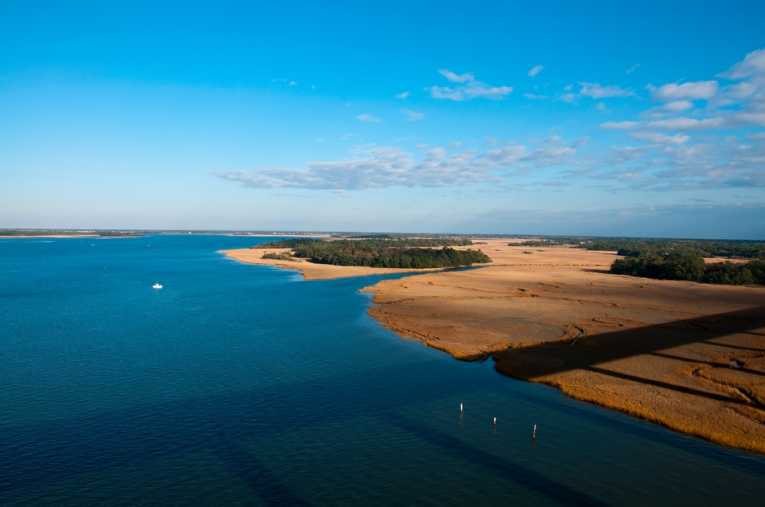When the screw-corvette (ie. steam-assisted, Pearl class) Challenger began taking sub-surface sea temperatures in 1872, she was so much the equivalent of current space shuttles that one was named after her! This significant vessel, during her even more significant 4-year voyage, also took the first ever photograph of an Antarctic iceberg. It is incredible that our measures of global-warming now owe a lot to her.
Deep in their labs of the St Petersburg Coastal and Marine Science Center of the US Geological Survey, in Florida, Asbury H Sallenger Junior and his merry crew have verified a "fingerprint" in the western Atlantic. Sea levels rise (SLR) to different levels at different rates. Predicted patterns (known as "fingerprints") of these rises have not yet been verified on the spot, until Dr Sallenger's voyages around the east coast of the US. The actual accelerated rate of SLR occurs along a 1000km stretch north from Cape Hatteras in North Carolina to Cape Cod near Boston, MA, as seen here:
(SLRD is sea level rise difference)

Credit: © Nature Climate Change; doi:10.1038/nclimate1597
As you can see, the sea levels are in mm per year, with a maximum of 3mm around the western Atlantic. Circles are colour-coded to reflect computed SLRDs; no colour fill indicates SLRDs that are not statistically different from zero
The north-eastern seaboard of the US then forms an "NEH" or north-eastern hot-spot! This all looks quite bad, but wait till you see the acceleration of the rate of change, thanks to the readings taken in 1950 -

a, 1950-2009. b, 1960-2009. c, 1970-2009; Credit: © Nature Climate Change; doi:10.1038/nclimate1597
The early readings in (a) help us to see that since 1970 in particular, the whole 1000km stretch has taken off, with central areas rising by nearly 6mmm per year during that shorter time.
The implication must be that there has been a recent acceleration in sea level rise. (This has already been noticed in tropical regions and the Southern Ocean.) Even since 1950, levels were 3-4X higher than global averages.
Around 1950 the sea levels were relatively low, "sloping down" from the warm waters of the strong Gulf Stream and its associated North Atlantic Current. What could raise them was inhibition of deep convection in an overturning current in the Atlantic, causing a decrease in pressure gradients on the coast. Alternatively, changes in the North Atlantic Oscillation could weaken the ocean's gyre system with the same effect, and this seems to be true before 1940.
But recently, SLRs certainly have risen fast, according to these precious gaugings stretching back up to 156 years. The predictions from various models tell of an NEH from the end of the 21st century similar to our present precarious condition. A graph below shows that up till around 1950, acceleration was rife, but the recent "surge" since 1970 has been record-breaking.

Dependency of SLRDs on time series lengths for averages of NEH gauges; Credit: © Nature Climate Change; doi:10.1038/nclimate1597
The most recent start year was 1970, yielding a 40-yr time series; the oldest was 1894, yielding a 115-yr series. The numbers of gauges used in each average are indicated by the colour code. Recent SLRDs (Sea level Rise Differences) are based on averages using up to 21 gauges; the oldest are based on as few as one gauge, NYC
So it remains to discuss what will happen as the rise continues its recent acceleration beyond these 21st century levels, at least 100 years too early. The graph helps a lot as it implies 1990 as the onset of an acceleration (because, apparently, the SLRD increases near the centre point of a regression window.) This agrees with a global acceleration in SLRs and temperatures at that time.
Ice Melt contributes by reducing the buoyancy of water at the surface, with the Greenland melt especially significant, although there is a twelve year lag there between melt and temperature rise. Aerosols from volcanoes have affected sea-levels in a 900 year cycle, but all of these "quibbles" seem to be missing the point. There is now a real measurement, divorced from all of the predictions from models, but agreeing with them vehemently. Cities and wetlands on the eastern seaboard beware. This is going to cost!










